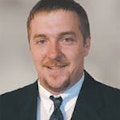Basics: Part 1 Plug Weld on Lap JointawQT FAQ
What year was the Aluminum WQT implemented? First AWQT site opened in October 2000 at Clackamas Community College in Oregon City, OR.
How many test sites are there? Currently 15 U.S. locations.Has this number grown over the past year? Yes. We are opening an average of three to five new sites per year.
Where are additional test sites needed? AWQTs are offered only at current active SWQT sites. We are looking at major markets first and eventually will be looking at all current SWQT markets.
How many technicians have taken the AWQT since its inception? To date, 101 technicians and 444 technical school/community college students. What was the overall pass percentage during this time? For industry technicians the pass rate is 100%.Has the pass percentage improved over the years? Do you have yearly statistics? Because Technicians are required to take WCA01, WCA02 and WCA03 in sequential order, the pass rate has been at 100% since implementation of the program.How many technicians took the AWQT last fiscal year? 42 industry technicians and 149 technical school/community college students.How many technicians are currently qualified through the program? 323 industry technicians and technical school/community college students.Do you know how many facilities employ a qualified tech? 43 U.S. collision shops and eight other U.S. related businesses.Which welds provide the biggest challenge or have the greatest failure rate? The plug weld has been the greatest challenge. The welder must move much faster than they are accustomed to moving with steel. What should technicians do to improve their chances of passing the test the first time? Take all three programs. WCA01, WCA02 and WCA03. Keep an open mind and put together an Aluminum tool box with tools that have only been used on or are for Aluminum repair.Source: Audie Swedeen, I-CAR Qualification Test ManagerAluminum usage in vehicle body structures is growing. This fact makes the addition of aluminum welding skills a high priority for every metal technician. Since 1994, I-CAR has enabled metal technicians to prove their steel welding skills through the I-CAR Welding Qualification Test (WQT) program administered at more than 90 test centers across the United States. With the growth in aluminum usage evident, I-CAR developed a version of the WQT geared towards aluminum alloys common in automotive construction.Just like the WQT, the I-CAR Aluminum Welding Qualification Test (AWQT) requires technicians to perform three different types of welds in both the vertical and overhead positions.Following are the three weld types:Plug weld on lap jointFillet weld on lap jointButt joint with backingFor technicians who have passed the steel version of the qualification test, the preparing process and testing procedures for the AWQT will be somewhat familiar.
Technicians who would like to take the AWQT will need to pre-register for the WCA01, WCA02 , WCA03 series. WCA01 is the four-hour class, WCA02 is the four-hour hands-on prep and the WCA03 is the four-hour skills test or AWQT. Technicians must take these programs in sequential order. There is not a participant kit sent in advance as with the WQT.Last year, when ABRN detailed the steel WQT, the main recommendation from welding instructors and Audie Swedeen, I-CAR
About the Author

Russell Thrall III
Former ABRN Editor-in-Chief Russell Thrall, a second-generation collision repairer, has experienced the shop from the bottom up, starting as a clean up person and working his way to assistant manager by age 17. Thrall joined the staff of Chilton's Automotive Body Repair News in 1991 as technical editor and as senior editor in 1992. From 1993 through 2000, Thrall served as editor of Collision Repair Industry INSIGHT. Thrall returned to the staff of ABRN in June 2000 as editor-in-chief of the industry's largest monthly trade magazine. Thrall was a frequent speaker at industry events including the Collision Industry Conference (CIC), NACE, and numerous other local and regional events. He served as co-chairman of the Collision Industry Conference Electronic Commerce committee and is a member of the Board of Directors of the National Auto Body Council.